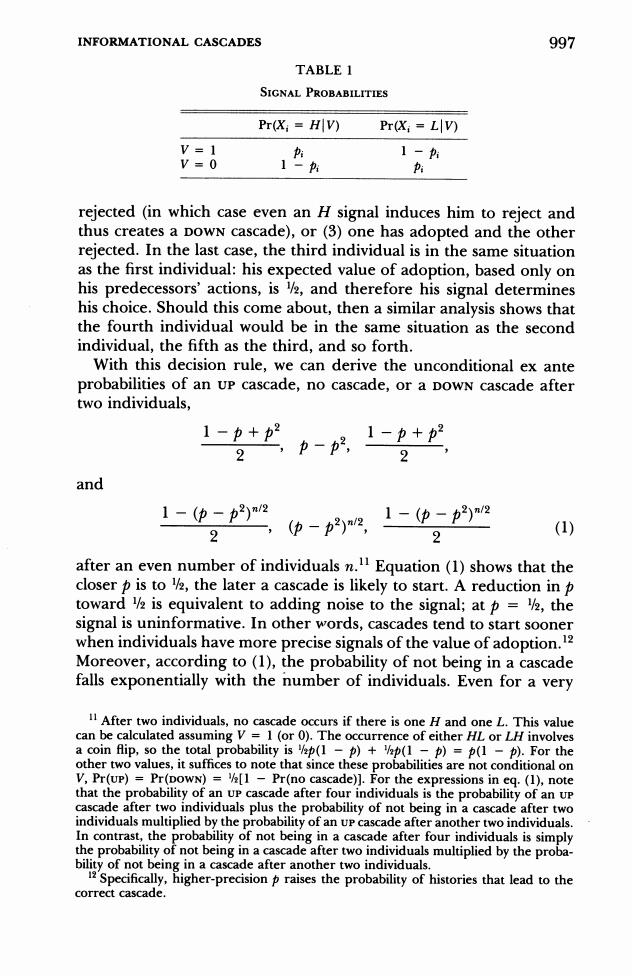正在加载图片...

INFORMATIONAL CASCADES 997 TABLE 1 SIGNAL PROBABILITIES Pr(X;=HV) Pr(Xi=L|V) V=1 1- V=0 1- Pi rejected (in which case even an H signal induces him to reject and thus creates a DowN cascade),or(3)one has adopted and the other rejected.In the last case,the third individual is in the same situation as the first individual:his expected value of adoption,based only on his predecessors'actions,is 2,and therefore his signal determines his choice.Should this come about,then a similar analysis shows that the fourth individual would be in the same situation as the second individual,the fifth as the third,and so forth. With this decision rule,we can derive the unconditional ex ante probabilities of an Up cascade,no cascade,or a DowN cascade after two individuals, 2p-p31-p+p 1-力+2 2 and 1-(中-p2)m2 1-(中-p2)n2 9 ,( -p)3 2 (1) after an even number of individuals n.1 Equation(1)shows that the closer p is to l,the later a cascade is likely to start.A reduction in p toward is equivalent to adding noise to the signal;at p=,the signal is uninformative.In other words,cascades tend to start sooner when individuals have more precise signals of the value of adoption.2 Moreover,according to(1),the probability of not being in a cascade falls exponentially with the number of individuals.Even for a very 11 After two individuals,no cascade occurs if there is one H and one L.This value can be calculated assuming V=1 (or 0).The occurrence of either HL or LH involves a coin flip,so the total probability is 'p(1-p)+p(1-p)=p(1 -p).For the other two values,it suffices to note that since these probabilities are not conditional on V,Pr(up)=Pr(DOwN)=[l -Pr(no cascade)].For the expressions in eq.(1),note that the probability of an Up cascade after four individuals is the probability of an up cascade after two individuals plus the probability of not being in a cascade after two individuals multiplied by the probability of an UP cascade after another two individuals. In contrast,the probability of not being in a cascade after four individuals is simply the probability of not being in a cascade after two individuals multiplied by the proba- bility of not being in a cascade after another two individuals. 1Specifically,higher-precision p raises the probability of histories that lead to the correct cascade